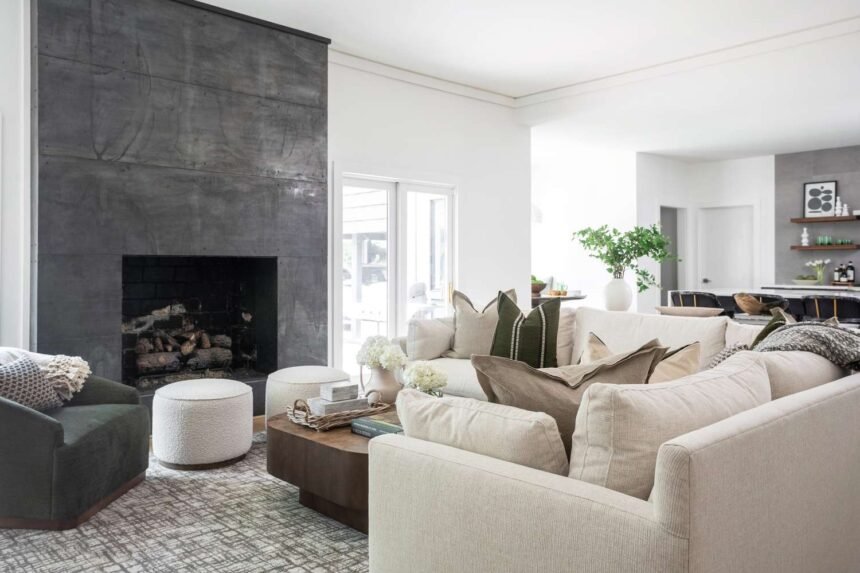Every family dreams of a home that feels both welcoming and practical. It’s the place where everyone can relax, spend time together, and still get on with the day-to-day routines of life. Yet striking the balance between functionality and family comfort isn’t always easy. Too much focus on practicality can make a space feel sterile, while leaning only on comfort risks clutter and chaos. The sweet spot lies somewhere in the middle, creating a cosy home that works hard for family life while still feeling warm and inviting.
What Does a Cosy, Functional Home Really Mean?
A cosy home isn’t just about fluffy cushions and throws, though they do help. At its core, cosiness comes from feeling relaxed, secure, and surrounded by things that make life easier. Functionality, meanwhile, is about design that adapts to family needs: durable materials, clever storage, and furniture layouts that encourage togetherness rather than isolation.
When blended, the two create spaces where people can unwind without sacrificing order or style. Think soft lighting over a practical dining table or a spacious family sofa layered with blankets that can withstand spills.
Why Family Comfort is More Important Than Ever
With busier work schedules, rising screen time, and the increasing popularity of “home as sanctuary” living, comfort is becoming a top priority in interiors. Families are seeking homes that allow for connection and relaxation while still supporting everyday tasks, like cooking, homework, and even home workouts.
The demand for multifunctional spaces stems from this desire for functionality without losing the feeling of comfort. Think of kitchens that double as homework hubs, living rooms that transform into movie theatres or spare rooms that serve as guest bedrooms and offices.
Designing Spaces That Work for Everyone
Family-Friendly Layouts: Open-plan layouts remain a favourite for families, but only work when zones are clearly defined. Rugs are an excellent way to visually separate areas, for example, defining a play space in the living room without needing walls. Flooring choices also matter: durable laminate or LVT stands up against busy spaces, while adding warmth with wood-effect finishes.
Clever Storage: Often the hidden hero of a functional home, storage helps maintain that calm, cosy feel without letting clutter take over. From ottomans that double as toy boxes to built-in shelving in hallways as well as baskets and bench seating with lift-up lids, there are all kinds of ways to sneak extra storage into your home without disrupting the design.
Practical Materials: Sticky fingers, muddy paws, and dropped toys are a natural part of family life. Choosing wipeable surfaces, like washable paint, stain-resistant fabrics and waterproof vinyl flooring, ensures style doesn’t suffer at the hands of practicality.
Lighting for Mood and Function: Lighting is crucial for blending practicality with comfort. Bright overheads are perfect for cooking or homework, but cosier evenings call for softer lamps, fairy lights, or dimmable switches. Layering different types of lighting ensures rooms work just as well for bustling family mornings as they do for calm evenings in.
Bring Cosiness into Everyday Living
A home can be highly functional and still feel flat if comfort isn’t considered. That’s where the small, thoughtful details make all the difference.
Textures are one of the easiest ways to create warmth. Layering rugs over wooden floors, draping soft throws across the sofa, and scattering cushions in different fabrics instantly softens the look of a room and makes it all the more inviting.
Colour is another powerful tool for creating cosiness. Warm neutrals, earthy shades, and gentle contrasts help a space feel calm and lived-in without overwhelming the senses. Even the smallest tweaks, like sage green cabinetry, can transform the atmosphere into something more soothing.
Personal touches also play a big role. Framed family photos, a child’s painting proudly displayed in the hallway, or a treasured heirloom chair all bring character and meaning into the home. These reminders of life and memory are what turn four walls into a nurturing environment.
Finally, cosiness doesn’t just stop at how a home looks. Scent and sound are equally important in setting the mood. A subtle candle fragrance, a diffuser with calming essential oils, or a favourite playlist playing softly in the background creates a multi-sensory sense of comfort that makes family time all the more enjoyable.
Is It Worth It?
A home that balances functionality with comfort improves daily life. Children can play freely without parents worrying about damage, and adults can relax knowing their space still looks stylish. Thoughtful choices mean the home adapts as family needs evolve, whether that’s toddlers taking their first steps or teenagers needing a quiet study corner.
A cosy home isn’t about perfection; it’s about creating an environment where family life feels supported, celebrated, and comfortable. So, yes, a cosy yet functional home is definitely worth the effort.
Author Bio:
Sophie Marlowe is a digital content writer and outreach executive for Luxury Flooring. She specialises in crafting engaging blogs on home improvement and home decor with a focus on flooring. Sophie writes handy how-tos, easy guides, and helpful comparisons, letting the reader be informed and inspired to take their home to the next level.









